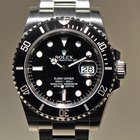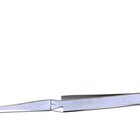A minor adjustment and a few minutes of your time are all it takes to make a tub or sink stopper work properly. See <a href="http://www.ehow.com/how_117443_clear-clogged-sink.html" target="_top">How to Clear a Clogged Sink or Tub</a> for more illustrations.
Raise the lever and pull the stopper out of the drain opening.
If the stopper itself is adjustable, turn the stopper head clockwise and reinsert it for a test. If it won't seal when turned in fully, unscrew it halfway and proceed to the next step.
For nonadjustable stoppers, remove the cover-plate screws and lift out the trip-lever assembly. Use a wrench or pliers to loosen the locknut on the threaded lift rod and turn the lift rod clockwise three to four times. Tighten the locknut before you reinstall the trip-lever assembly and stopper for a test.
Remove the cover-plate screws and lift out the plunger assembly.
Loosen the locknut on the threaded lift rod and turn the rod clockwise three to four times. Tighten the locknut before you reinstall the plunger assembly for a test.
If a sink won't hold water, look up behind the sink (with a flashlight if needed) to identify the following parts: a pivot rod that connects to the back of the drain pipe, a perforated strap (a clevis), and a screw that locks the strap onto the stopper rod. See illustration C in <a href="http://www.ehow.com/how_117443_clear-clogged-sink.html" target="_top">How to Clear a Clogged Sink or Tub</a>.
To make a stopper seal, hold the stopper rod with one hand (or have a helper hold it down from above). Loosen the clevis screw with pliers and slide the clevis up the rod a little. Tighten the screw and test the seal.
Related Articles

How to Unlock a Chamilia Bracelet

How to Fold a Graco Stroller

How to Use the Norelco Jet Clean System

How to Replace the Watch Battery in a ...

How to Take the Back Off a Citizen Watch

How to Remove Blackheads With Suction

How to Adjust a Rado Jubile Wristband

How to Change the Battery on an ...

How to Open a Watch Back

How to Clean an Electric Self Shaver

How to Open a Rolex Submariner

How to Open a Waterproof Watch Case

How to Replace the Battery in a ...

How to Remove Watch Band Links From an ...

How to Clean a Philips Norelco Shaver

How Do I Sharpen the Blades of a ...

How to Disassemble Remington Shavers

How to Reset a G Shock Watch

How to Install New Heads in a Norelco ...

How to Cook Shirakiku Rice
Tips
- Place an old towel on the floor of the tub before you remove a trip-lever or plunger assembly. This protects the tub from accidental damage and prevents the loss of a screw down the drain.
- While you have the cover plate off, inspect the foam gasket. If it is dried out, remove the screws that secure the drain assembly to the tub, then pull out the old gasket and replace it.
Warnings
- Wear goggles when adjusting a sink stopper that's overhead.
Writer Bio
This article was written by the CareerTrend team, copy edited and fact checked through a multi-point auditing system, in efforts to ensure our readers only receive the best information. To submit your questions or ideas, or to simply learn more about CareerTrend, contact us [here](http://careertrend.com/about-us).